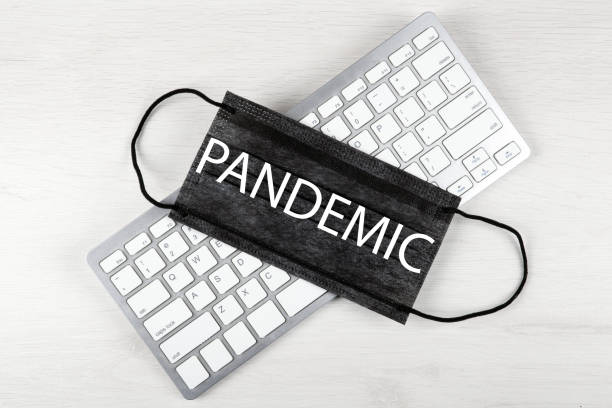In today’s hyperconnected world, conversations about digital habits, online addiction, and mental health are more relevant than ever. Among these emerging discussions is a term gaining traction — Fapdemic. The word “Fapdemic” combines “fap”, an internet slang for self-stimulation, and “epidemic”, symbolizing how widespread the behavior has become.
The Fapdemic represents a growing concern about the overconsumption of explicit content and the compulsive habits it can create. With smartphones, high-speed internet, and instant gratification culture, many people — especially younger generations — are finding themselves caught in cycles of overstimulation and dependence.
This article will explore the origins, effects, and solutions surrounding the Fapdemic — offering readers an informative, human-centered perspective that balances awareness with compassion.
The Evolution of the Fapdemic in the Modern World
How the Digital Age Sparked the Fapdemic
The rise of high-speed internet and free access to adult content has fundamentally changed how people interact with sexuality. What was once private and limited is now endlessly available at a tap. Algorithms, social media, and streaming platforms amplify this accessibility, feeding curiosity and, in some cases, compulsion.
The Fapdemic reflects a deeper issue: not just sexual activity itself, but the loss of control caused by constant digital stimulation. This phenomenon is increasingly being compared to other forms of behavioral addiction — like gaming, scrolling, or gambling online.
Why 2025 Has Seen a Spike in Conversations About Fapdemic
In 2025, mental health professionals and social researchers are noticing a sharp increase in online discussions around the Fapdemic. With post-pandemic loneliness, increased digital screen time, and stress-driven escapism, many individuals are using sexual activity as an emotional outlet.
Recent global surveys suggest a rise in compulsive sexual behavior across demographics, with more people acknowledging the problem and seeking help — often anonymously, through online communities and therapy.
The Psychological Roots Behind the Fapdemic
Stress, Loneliness, and Emotional Escape
At the heart of the Fapdemic lies emotional imbalance. Stress from work, academic pressure, or social isolation often drives individuals to seek temporary relief through sexual activity. The problem arises when this relief becomes habitual, replacing genuine coping mechanisms with digital escapism.
Dopamine Dependence and Reward Loops
The brain’s reward system is naturally wired to seek pleasure and avoid pain. Sexual release triggers dopamine, the same neurotransmitter linked with motivation and reward. However, frequent stimulation — especially through explicit content — desensitizes this system, leading to higher tolerance and stronger cravings. Over time, the cycle feeds itself, deepening the Fapdemic.
Social Comparison and Unrealistic Expectations
Platforms promoting idealized beauty and sexuality amplify insecurity and unrealistic standards. These comparisons distort healthy perceptions of intimacy, pushing people further into solitary, fantasy-based behavior — a hallmark of the Fapdemic.
Recognizing the Signs of the Fapdemic
Behavioral Warning Signs
-
Excessive time spent watching or seeking explicit material
-
Difficulty focusing on work or studies due to urges
-
Failed attempts to stop or reduce the behavior
-
Escalation of content intensity over time
Emotional and Social Indicators
-
Feelings of guilt, shame, or secrecy
-
Emotional numbness or dissatisfaction
-
Withdrawal from real-world intimacy or social interaction
-
Dependence on the activity for mood regulation
The Fapdemic is not defined by frequency alone, but by loss of control and negative life impact.
The Broader Impact of the Fapdemic
Mental Health Consequences
The Fapdemic has strong ties to anxiety, depression, and emotional instability. When individuals use sexual activity as a coping tool rather than an expression of pleasure, it may reinforce feelings of emptiness and stress. Over time, guilt and frustration often follow, deepening mental strain.
Physical and Biological Effects
While masturbation itself is a normal and healthy act, chronic overuse can lead to fatigue, hormonal imbalance, or sexual performance issues. Some report a condition called “porn-induced erectile dysfunction” (PIED), where overstimulation dulls natural arousal responses.
Relationship and Social Impacts
The Fapdemic can isolate individuals from genuine human connection. As people rely more on artificial stimulation, emotional closeness and real intimacy may suffer, creating a feedback loop of loneliness and further dependency.
The Cultural Conversation Around Fapdemic
A Shift in Awareness
What makes the modern Fapdemic unique is the open conversation surrounding it. Online forums like Reddit and platforms like TikTok and YouTube have become spaces where people share recovery stories and personal struggles. This shift reflects growing awareness that behavioral addictions deserve the same compassion and understanding as substance-based ones.
Media Influence and Normalization
The entertainment industry, including streaming platforms and social media, has blurred the lines between sexual content and everyday media. Sensual imagery and clickbait have become marketing tools, conditioning viewers to seek constant stimulation. Experts argue this societal normalization contributes significantly to the Fapdemic’s persistence.
Breaking the Cycle: How to Overcome the Fapdemic
Step 1: Awareness and Acceptance
The first step in overcoming the Fapdemic is recognizing it without self-judgment. Shame fuels secrecy, which strengthens the habit. Acknowledgment opens the door to change.
Step 2: Identify Triggers
Common triggers include boredom, loneliness, late-night internet browsing, and stress. Tracking these triggers helps individuals replace reactive behavior with conscious choice.
Step 3: Replace, Don’t Just Remove
Removing a habit without replacing it leaves a void. Instead of forcing abstinence, redirect energy into:
-
Physical exercise
-
Meditation or mindfulness
-
Creative hobbies (art, writing, or music)
-
Building real-life relationships
Step 4: Digital Detox and Boundaries
Implement practical limits:
-
Use app blockers or website filters.
-
Schedule screen-free hours daily.
-
Keep electronic devices out of the bedroom at night.
These changes disrupt the autopilot behaviors that feed the Fapdemic.
Step 5: Seek Professional or Community Help
Therapists specializing in compulsive behaviors can offer structured strategies, such as Cognitive Behavioral Therapy (CBT). Support communities — both online and offline — can provide accountability and shared understanding.
Preventing the Fapdemic in the Younger Generation
With early exposure to explicit material more common than ever, prevention must start with education and openness.
Parents, educators, and community leaders can help by:
-
Teaching healthy digital boundaries
-
Promoting emotional intelligence
-
Encouraging self-worth beyond appearance or sexuality
-
Normalizing conversations around consent and real intimacy
Building these foundations can protect youth from falling into compulsive digital habits.
A Holistic Approach to Recovery
Overcoming the Fapdemic isn’t just about self-control — it’s about self-discovery. Reconnecting with purpose, creativity, and real relationships rebuilds the emotional ecosystem that excessive sexual habits often replace.
Nutrition, sleep, exercise, and mindfulness all contribute to brain balance, reducing cravings and improving mood. Simple lifestyle upgrades — such as sunlight exposure, hydration, and reduced screen time — can drastically improve focus and energy.
The Role of Society and Technology in Ending the Fapdemic
The Fapdemic cannot be solved by individuals alone. It requires collective awareness. Tech companies and content creators can help by promoting healthier algorithms, limiting explicit material recommendations, and encouraging digital well-being tools.
Meanwhile, media platforms and influencers can use their reach to normalize discussions about behavioral health instead of glamorizing overindulgence. Social responsibility, combined with individual effort, can gradually reverse the Fapdemic trend.
The Future Outlook: Moving Beyond the Fapdemic
By 2025 and beyond, experts expect behavioral addiction awareness to become part of mainstream mental health programs. Schools, workplaces, and digital wellness initiatives are beginning to integrate training and therapy access for users affected by compulsive habits, including the Fapdemic.
The goal isn’t suppression but balance — reclaiming control of one’s choices, focus, and emotional energy in a world overflowing with stimulation.
Conclusion: Turning the Fapdemic into a Movement for Mindful Living
The Fapdemic serves as a wake-up call for society to rethink its relationship with technology, pleasure, and emotional health. It’s not about moral judgment but self-awareness — understanding when natural desires cross into harmful patterns.
By facing the issue openly, replacing harmful routines with healthy habits, and embracing mindful living, people can transform the Fapdemic into an opportunity for growth, resilience, and balance.
In the end, the Fapdemic isn’t just about overindulgence — it’s a mirror reflecting our generation’s struggle with overstimulation. Awareness, empathy, and daily mindfulness can turn the tide toward recovery and authentic human connection.








Leave a Reply